Abstract
The present system of classification of influenza viruses was developed by WHO Expert Committees meeting in 1953 and 1959, and was based on the ribonucleoprotein and haemagglutinin antigens. Since then, another antigen, neuraminidase, has been identified and it has been found that the haemagglutinin and the neuraminidase undergo independent antigenic variation. It is therefore necessary that the system of classification should describe all three antigens. Furthermore, it is now known that both the haemagglutinin and neuraminidase antigens of influenza A viruses of human origin may be similar to, or identical with, those of strains from non-human hosts, and it is necessary that this antigenic relationship should be indicated. For influenza A viruses, therefore, a new system retaining as much as possible of the old system but also including the new information has been developed. It is the intention of WHO that the new system should be brought into use on 1 January 1972.
Full text
PDF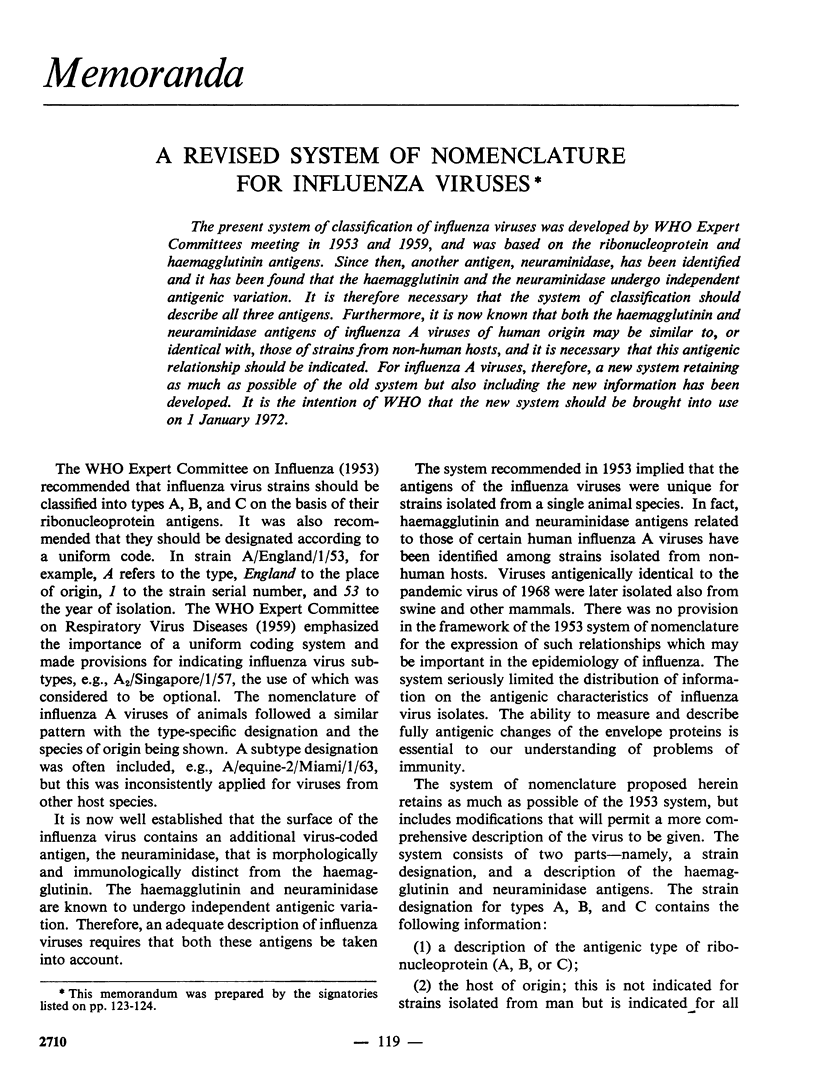
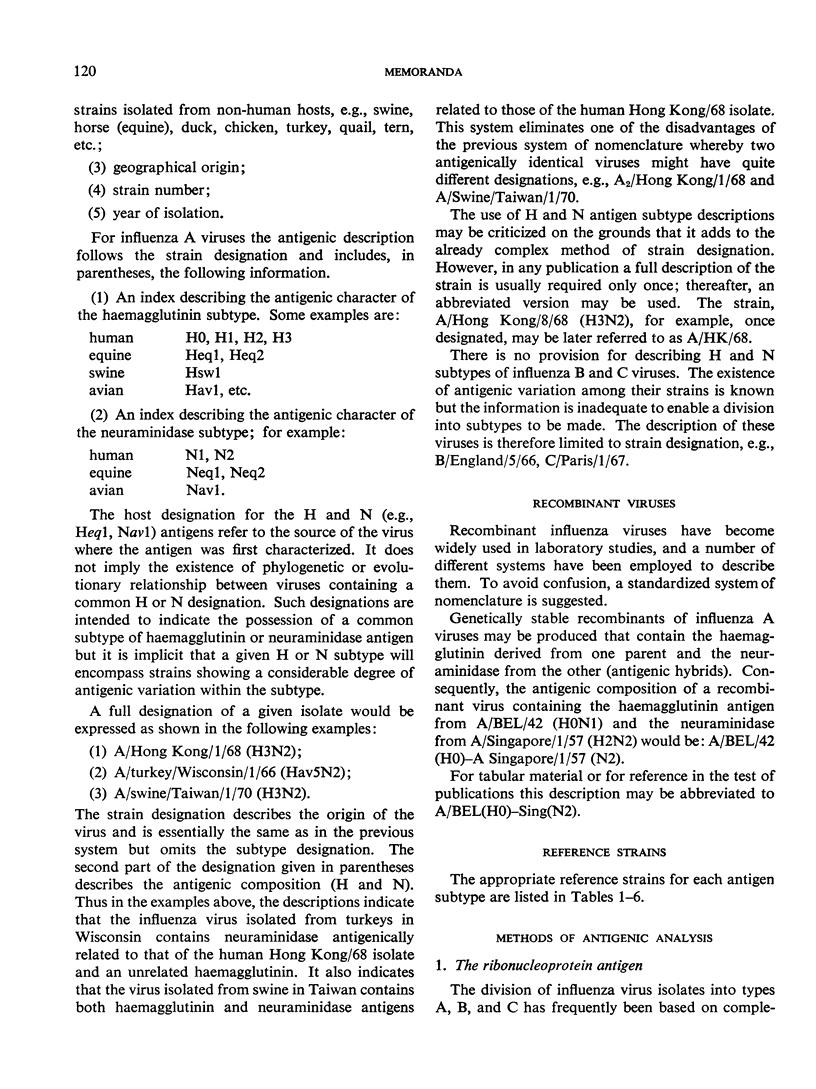
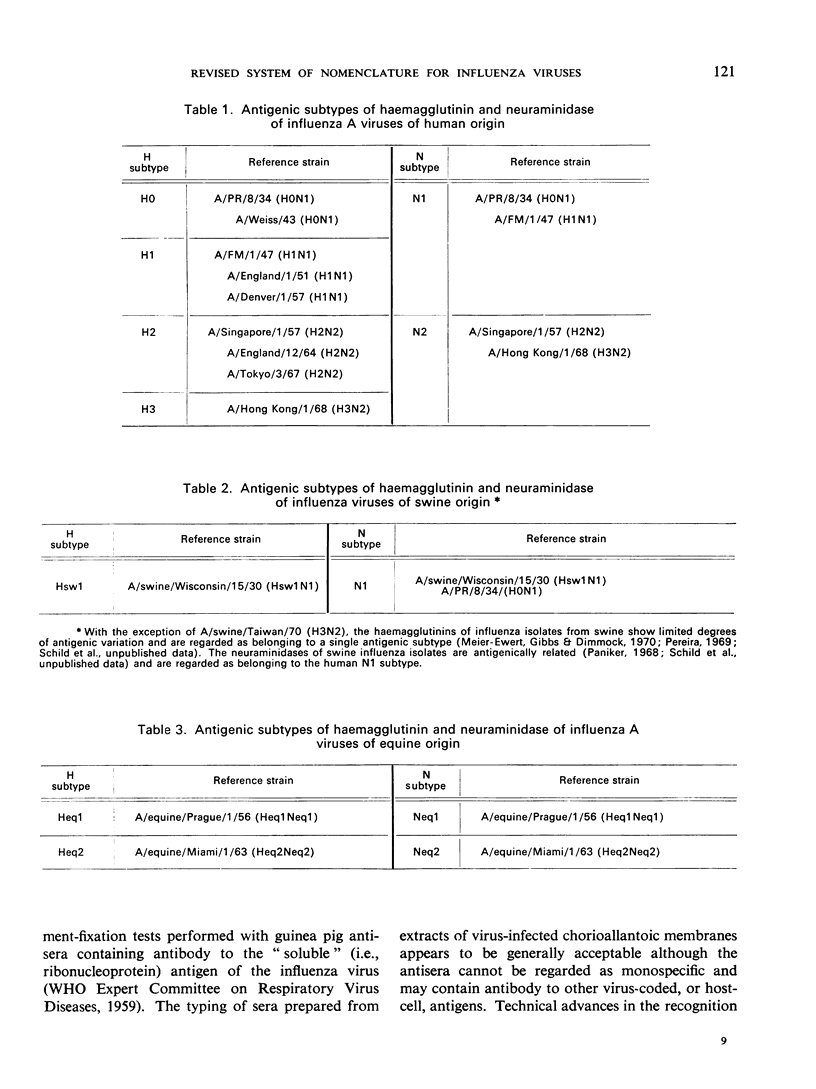
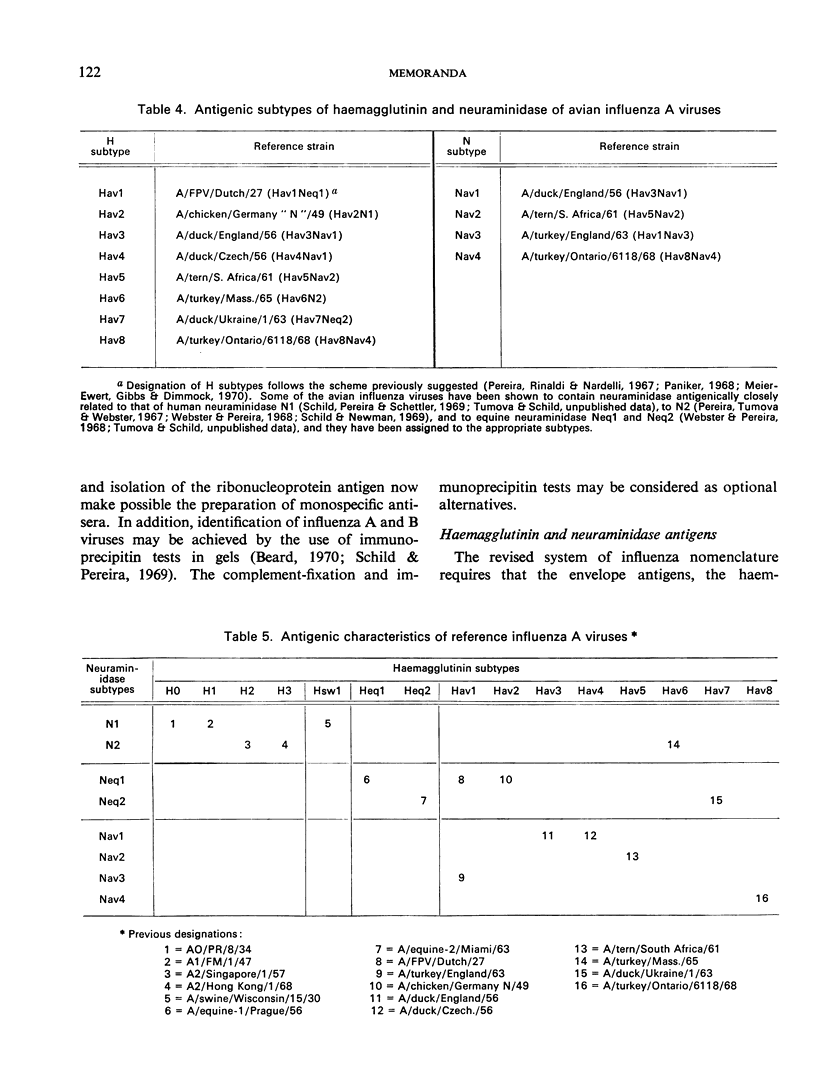
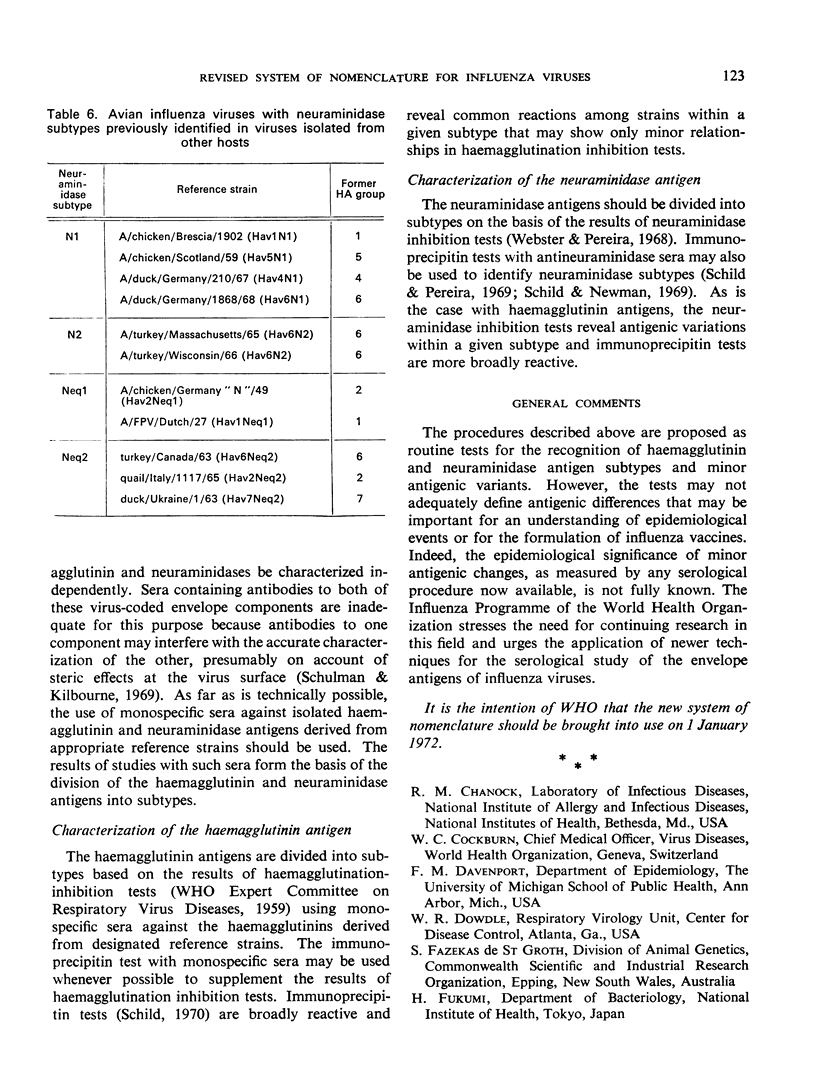
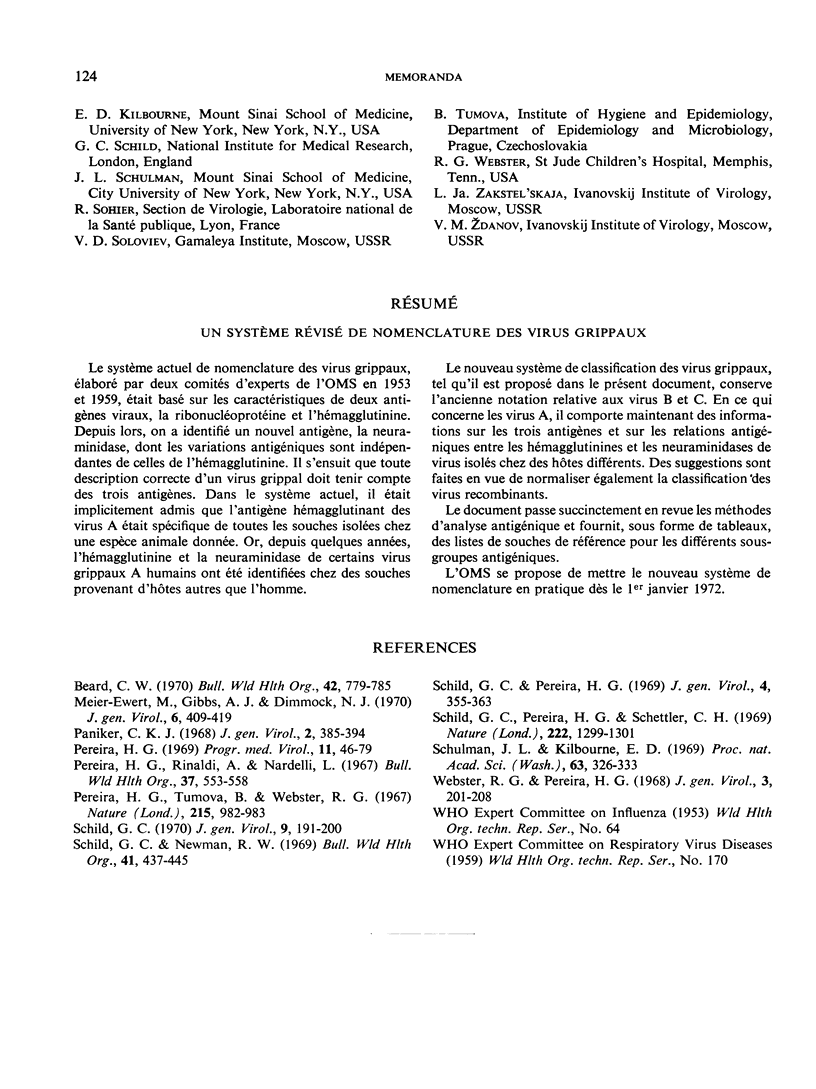
Selected References
These references are in PubMed. This may not be the complete list of references from this article.
- Beard C. W. Demonstration of type-specific influenza antibody in mammalian and avian sera by immunodiffusion. Bull World Health Organ. 1970;42(5):779–785. [PMC free article] [PubMed] [Google Scholar]
- Meier-Ewert H., Dimmock N. J. Studies on antigenic variations of the haemagglutinin and neuraminidase of swine influenza virus isolates. J Gen Virol. 1970 Mar;6(3):409–419. doi: 10.1099/0022-1317-6-3-409. [DOI] [PubMed] [Google Scholar]
- Paniker C. K. Serological relationships between the neuraminidases in influenza viruses. J Gen Virol. 1968 May;2(3):385–394. doi: 10.1099/0022-1317-2-3-385. [DOI] [PubMed] [Google Scholar]
- Pereira H. G. Influenza: antigenic spectrum. Prog Med Virol. 1969;11:46–79. [PubMed] [Google Scholar]
- Pereira H. G., Rinaldi A., Nardelli L. Antigenic variation among avian influenza A viruses. Bull World Health Organ. 1967;37(4):553–558. [PMC free article] [PubMed] [Google Scholar]
- Pereira H. G., Tumova B., Webster R. G. Antigenic relationship between influenza A viruses of human and avian origins. Nature. 1967 Aug 26;215(5104):982–983. doi: 10.1038/215982a0. [DOI] [PubMed] [Google Scholar]
- Schild G. C., Newman R. W. Immunological relationships between the neuraminidases of human and animal influenza viruses. Bull World Health Organ. 1969;41(3):437–445. [PMC free article] [PubMed] [Google Scholar]
- Schild G. C., Pereira H. G. Characterization of the ribonucleoprotein and neuraminidase of influenza A viruses by immunodiffusion. J Gen Virol. 1969 Apr;4(3):355–363. doi: 10.1099/0022-1317-4-3-355. [DOI] [PubMed] [Google Scholar]
- Schild G. C., Pereira H. G., Schettler C. H. Neuraminidase in avin influenza A virus antigenically related to that of human A0 and A1 subtypes. Nature. 1969 Jun 28;222(5200):1299–1301. doi: 10.1038/2221299a0. [DOI] [PubMed] [Google Scholar]
- Schild G. C. Studies with antibody to the purified haemagglutinin of an influenza Ao virus. J Gen Virol. 1970 Dec;9(3):191–200. doi: 10.1099/0022-1317-9-3-191. [DOI] [PubMed] [Google Scholar]
- Schulman J. L., Kilbourne E. D. Independent variation in nature of hemagglutinin and neuraminidase antigens of influenza virus: distinctiveness of hemagglutinin antigen of Hong Kong-68 virus. Proc Natl Acad Sci U S A. 1969 Jun;63(2):326–333. doi: 10.1073/pnas.63.2.326. [DOI] [PMC free article] [PubMed] [Google Scholar]
- Webster R. G., Pereira H. G. A common surface antigen in influenza viruses from human and avian sources. J Gen Virol. 1968 Sep;3(2):201–208. doi: 10.1099/0022-1317-3-2-201. [DOI] [PubMed] [Google Scholar]


